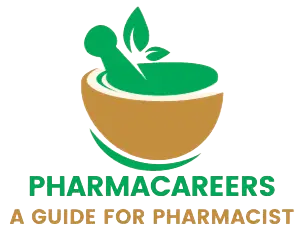Pharmacy Practice MCQ, in this article we will solve, Practice MCQ under subject Microbiology. Read following article for your reference.
Methods For Standardization Of Antibiotics, Vitamins And Amino Acids » PHARMACAREERS
- What is the primary purpose of standardization in pharmaceuticals?
- a) To enhance flavor
- b) To ensure consistent quality and efficacy
- c) To increase production speed
- d) To reduce costs
- Which method is commonly used for the standardization of antibiotics?
- a) Spectrophotometry
- b) HPLC (High Performance Liquid Chromatography)
- c) Turbidimetric assay
- d) All of the above
- What does HPLC stand for?
- a) High Potential Liquid Control
- b) High Performance Liquid Chromatography
- c) High Pressure Liquid Chromatography
- d) High Precision Liquid Calibration
- In the standardization of antibiotics, what does MIC stand for?
- a) Minimum Inhibitory Concentration
- b) Maximum Inhibitory Concentration
- c) Minimum Instant Concentration
- d) Maximum Instant Concentration
- Which type of assay is often used for the standardization of vitamins?
- a) Biological assay
- b) Chemical assay
- c) Immunoassay
- d) Both a and b
- What is the principle behind a turbidimetric assay for antibiotics?
- a) Measurement of turbidity to determine bacterial growth inhibition
- b) Measurement of color change
- c) Measurement of pH
- d) Measurement of fluorescence
- Which vitamin is commonly standardized using microbiological assays?
- a) Vitamin A
- b) Vitamin B12
- c) Vitamin D
- d) Vitamin C
- What is the importance of standardizing amino acids in pharmaceutical formulations?
- a) To enhance flavor
- b) To ensure proper dosage and efficacy
- c) To increase production speed
- d) To improve color
- Which method is commonly used for the standardization of amino acids?
- a) HPLC
- b) GC (Gas Chromatography)
- c) Ion exchange chromatography
- d) All of the above
- What is the primary method for detecting and quantifying antibiotics in a sample?
- a) Turbidimetric assay
- b) Spectrophotometry
- c) Microbial inhibition assay
- d) HPLC
- Which type of assay uses antibodies to measure the concentration of vitamins?
- a) Chemical assay
- b) Biological assay
- c) Immunoassay
- d) Physical assay
- What is a common solvent used in HPLC for the standardization of antibiotics?
- a) Water
- b) Methanol
- c) Ethanol
- d) Acetone
- Why is it important to standardize vitamins in pharmaceutical products?
- a) To ensure they provide the intended health benefits
- b) To enhance flavor
- c) To reduce production costs
- d) To increase shelf life
- Which assay is used to determine the potency of an antibiotic?
- a) Microbial inhibition assay
- b) Immunoassay
- c) Colorimetric assay
- d) Gravimetric assay
- Which vitamin is commonly standardized using a spectrophotometric method?
- a) Vitamin A
- b) Vitamin C
- c) Vitamin D
- d) Vitamin K
- What is the role of a standard curve in the standardization process?
- a) To determine the color of the solution
- b) To plot concentration versus response for quantification
- c) To measure pH levels
- d) To calibrate equipment
- Which amino acid is often standardized using ion exchange chromatography?
- a) Glycine
- b) Methionine
- c) Glutamine
- d) Tryptophan
- What does a high MIC value indicate about an antibiotic?
- a) High potency
- b) Low potency
- c) High toxicity
- d) Low toxicity
- Which method is used to separate and quantify multiple vitamins in a complex mixture?
- a) Gas Chromatography
- b) HPLC
- c) Spectrophotometry
- d) Turbidimetric assay
- What is the principle behind a microbial inhibition assay?
- a) Measuring the zone of inhibition around an antibiotic disk
- b) Measuring the color change in a solution
- c) Measuring pH changes in a culture
- d) Measuring turbidity changes in a culture
- Which vitamin is often quantified using a bioassay involving microorganisms?
- a) Vitamin B6
- b) Vitamin B12
- c) Vitamin E
- d) Vitamin K
- What is the purpose of using a reference standard in the standardization of antibiotics?
- a) To determine the color of the solution
- b) To compare and validate the potency of the antibiotic
- c) To measure pH levels
- d) To calibrate equipment
- Which analytical technique uses a detector to measure the absorption of UV light by vitamins?
- a) HPLC
- b) Gas Chromatography
- c) Spectrophotometry
- d) Immunoassay
- Why is it important to standardize amino acids in nutritional supplements?
- a) To enhance flavor
- b) To ensure proper dosage and efficacy
- c) To reduce production costs
- d) To improve color
- Which method is commonly used to quantify vitamins in pharmaceutical formulations?
- a) HPLC
- b) GC
- c) Ion exchange chromatography
- d) Turbidimetric assay
- What does a low MBC value indicate about an antibiotic?
- a) High potency
- b) Low potency
- c) High toxicity
- d) Low toxicity
- Which assay measures the color change of a solution to quantify vitamin concentration?
- a) Colorimetric assay
- b) Microbial inhibition assay
- c) Turbidimetric assay
- d) Gravimetric assay
- Which amino acid is commonly standardized using HPLC?
- a) Lysine
- b) Leucine
- c) Valine
- d) All of the above
- What is the importance of standardizing antibiotics in pharmaceutical formulations?
- a) To ensure they provide the intended therapeutic effects
- b) To enhance flavor
- c) To reduce production costs
- d) To increase shelf life
- Which method is used to separate and quantify amino acids in a mixture?
- a) Gas Chromatography
- b) HPLC
- c) Spectrophotometry
- d) Turbidimetric assay
For more regular updates you can visit our social media accounts,
Instagram: Follow us
Facebook: Follow us
WhatsApp: Join us
Telegram: Join us




One response to “Pharmacy Practice MCQ”
[…] For practice MCQ on this article, click here. […]